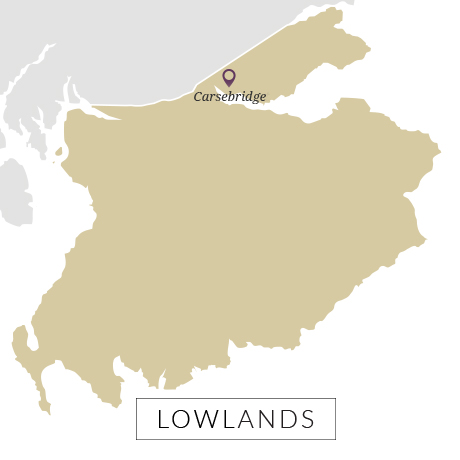Glen Ord
Diageo's green-grassiest new make.


The busy brewing town of Alloa was the perfect site for John Bald to erect a distillery, what with a direct access to nearby coal pits, grain and malt delivered via the Alloa Harbour, and access to water at the Gartmorn Dam.
At the time of a visit by Victorian whisky writer Alfred Barnard in the late 1880s, Carsebridge covered 10 acres and had an output of between 1.4-1.7 million gallons. By the time it became part of Scottish Grain Distillers in 1966, it was one of the biggest grain distilleries in Scotland.
Carsebridge has only ever been bottled as a single grain with high age statements by independent bottlers in recent years, though as a result of its closure in 1983, stocks are now running low.

At the end of the 18th century, John Bald’s Carsebridge was considered one of the largest manufacturers of whisky in Scotland, alongside the might of the Haigs and the Steins. In 1798 John Francis Erskine of Mar granted a lease to John Bald to operate a distillery ‘near the Carse Bridge in the parish of Alloa’.
The Carsebridge distillery was built the following year as a malt distillery, and ran under family ownership until it became part of DCL upon the latter’s formation in 1877.
In 1846, following the death of John’s son, Robert, Carsebridge was taken over by his second son, John ‘the Politic’ Bald II, under the company John Bald & Co. Noticing increasing demand for grain whisky for blending, John II converted Carsebridge into a grain distillery in 1852, installing two Coffey stills. Carsebridge immediately became one of the largest producers of grain whisky in Scotland, second only to Edinburgh’s Caledonian.
John II was a visionary and saw value in the collective effort of Scotland’s grain distillers to succeed in what was a fluctuating market. In 1856 he ensured John Bald & Co was part of a ‘Trade Arrangement for one year’ among the six largest grain distillers – Caledonian, Carsebridge, Seggie, Glenochil, Cambus and Haddington – to distribute market share, securing the future of the company and Carsebridge. A second agreement followed in 1865, this time with the addition of Adelphi and Yoker distilleries, Cameronbridge, which replaced Seggie, and Port Dundas, which replaced Haddington.
In 1877 John II made one last commitment to the future of grain whisky by becoming one of the founding members of Distillers Company Ltd.
Carsebridge was transferred to Scottish Grain Distillers in 1966, by which time it had acquired a third Coffey still and one of the first ‘distillers’ dried-solubles’ plants, making it the largest distillery in SGD’s portfolio.
It eventually closed in 1983 following the acquisition and subsequent consolidation of DCL by new owner Guinness, and its buildings demolished in the 1990s. However Carsebridge’s cooperage remained in use by Diageo (the descendent of DCL), until 2011 when operations were moved to the nearby Cambus Cooperage at Blackgrange.
The Grade B-listed Carsebridge House, the former distillery manager’s home, still stands in the unused complex.